“The most vivid memory of my childhood was watching my grandmother prepare bread. She would knead the dough twice a week using ancient flours and would personally oversee the leavening process,” Maria Grazia Di Lauro, owner of Masseria Potenti, tells me.
“Once kneaded, the dough was placed under wool blankets to rise, and throughout the night, my grandmother would check on its progress between her prayers. In the early morning, the village baker would collect the dough, which was marked with each family’s initials to prevent confusion. He would then take it to the ancient wood-fired oven in Manduria, where every family in the village brought their bread to be baked daily, along with biscuits, friselle, taralli, and figs.”
With over 100 different types of local breads, Puglia takes its carbs seriously, earning the region the nickname of “tavoliere”, or “breadbasket”, of Italy. And earn it the region certainly has. It’s from here that we get crisp focaccia barese, studded with plump tomatoes and olives, and the slightly nutty nuance of a soft and chewy Pane di Altamura–not to mention friselle, its twice-baked texture a blank canvas for summertime flavors, or the fire-kissed pane di grano arso.
Archaeological evidence traces bread baking in Puglia back to the Bronze Age, while Greek colonists arriving in the 8th century BC left their mark with the introduction of beloved favorites like taralli, small ring-shaped crackers still treasured today. Under Roman rule, Puglia emerged as a vital wheat supplier, its bread acclaimed for its high-quality and long shelf life thanks to durum wheat flour. This legacy still persists today, with Puglia remaining Italy’s leading producer of durum wheat, a heritage that’s also nurtured the region’s rich pasta culture.
Fast forward and the Middle Ages saw Arab influences enriching Pugliese bread with new spices and flavorings, while feudal systems established community ovens, fostering communal bread-making traditions. Despite advances in milling and baking techniques, cherished traditional methods like sourdough starters and natural fermentation persist here.
In Puglia, bread is more than just sustenance. It’s a cultural cornerstone—a symbol of hospitality and a revered tradition passed down through generations, the centerpiece of countless Pugliese celebrations. Here are some local favorites.
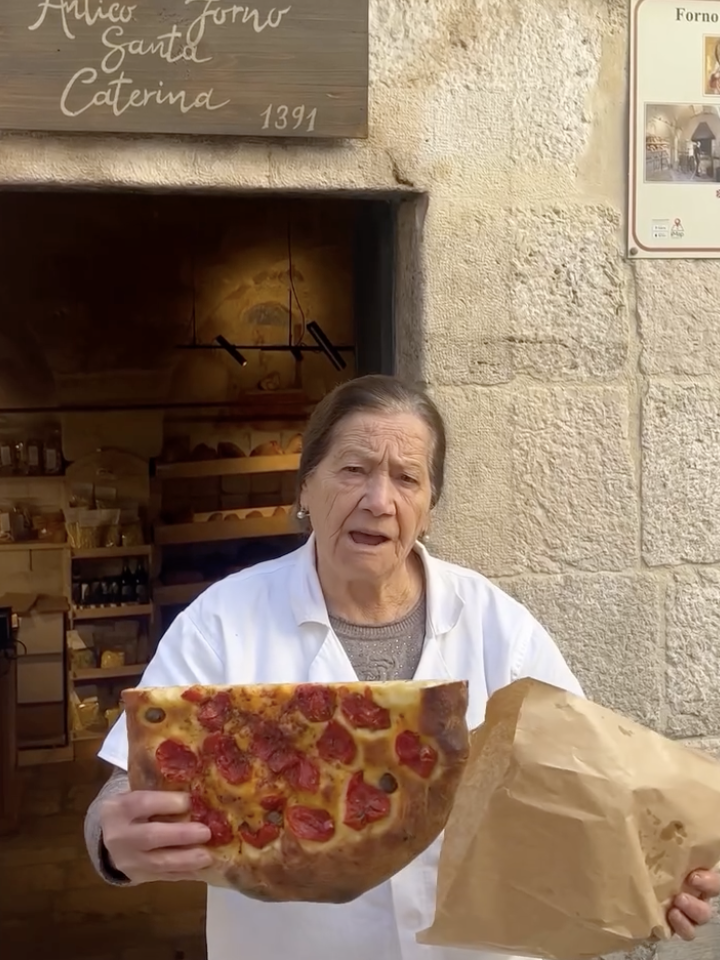
Courtesy of Forno Santa Caterina
FOCACCIA BARESE
Focaccia barese stands out from its Ligurian cousin in both form and flavor. Unlike focaccia genovese–typically a large, rectangular flatbread with a thin crust and generous olive oil drizzle–focaccia barese takes on a more pizza-like approach. It’s usually round, boasting a thicker, airier dough that yields a satisfying chewiness. Forget the minimalist toppings–focaccia barese celebrates the bounty of Puglia with intensely sweet cherry tomatoes, briny olives, and a dusting of oregano.
The modern focaccia barese is believed to have originated in Altamura, the bread capital of Puglia, where bakers capitalized on the residual heat from wood-burning ovens. The moments when the temperature was too low to bake the town’s eponymous Pane di Altamura proved ideal for baking thinner, flatter portions of dough, which were then simply seasoned with olive oil, salt, and herbs like oregano and rosemary. Over time, the recipe evolved to include signature ingredients like tomatoes and olives, defining true focaccia barese.
Where to find the best focaccia barese:
I wander along one of Bari’s narrow, cobblestone streets one Saturday morning, arriving at Panificio Santa Rita a few minutes before opening time–the intoxicating aroma of freshly-baked bread seeping out the second the doors are unlocked. The owners know their regulars’ preferences without asking and hand each a bag bursting with the goods along with a few words of greeting.
The oversized slice of focaccia barese here is delectable, dotted with sweet tomatoes, ripe olives, and aromatic oregano. The crispy exterior laced with extra virgin olive oil is the perfect foil to a spongy center lighter than the Adriatic air.
“[The] tomatoes and extra virgin olive oil must both be top-notch,” owner Francesco Giuseppe Bolumetto shares, his hands gesticulating, when I ask for his baking secrets. He explains that in the morning, when they start making the focaccias, they’ve already begun the leavening process in the evening. The dough–a simple mix of water, semolina, flour, and oil–requires 10 to 11 hours of leavening for its signature light texture.
The bakery, in its 104th year, has been in his family for the last 56 years, with Giuseppe and his brother representing the third generation.
When I ask Giuseppe what he enjoys most about his work, he yawns and answers “the lack of sleep” before earnestly sharing, “The real joy comes from connecting with customers. When they stop by, share their thoughts, or even offer criticism, it feels good. It’s not just about the money; it’s like meeting a friend on the street–a quick but meaningful connection. This job gives us a way to spend time, chat, and bond.”
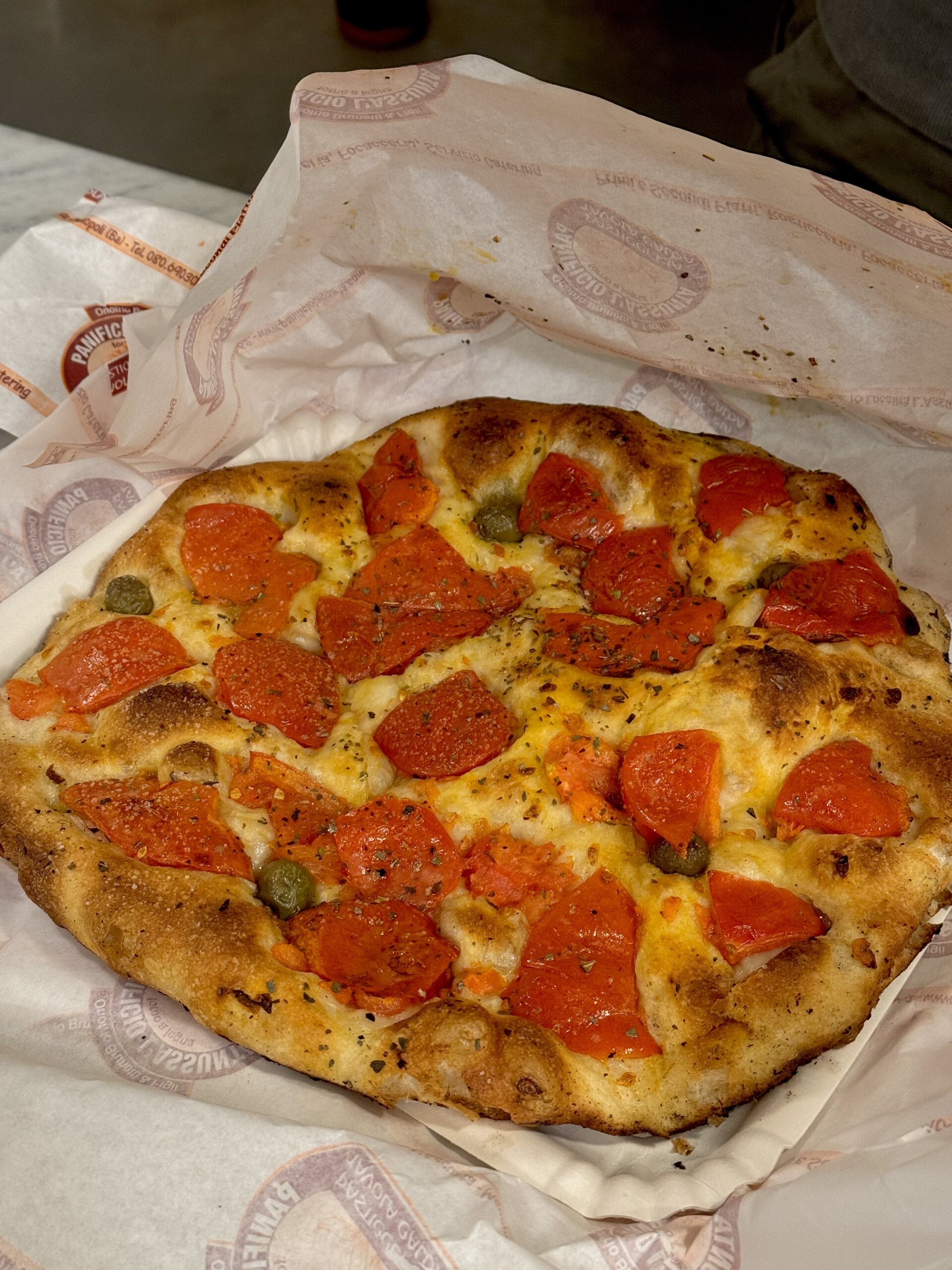
PANZEROTTO
A panzerotto is a crescent-shaped pocket of fried dough, akin to a petite calzone, oozing with molten fillings, ensconced within a golden brown and irresistibly crispy exterior. While the classic filling comprises mozzarella and tomato, nowadays, many variations exist, like mortadella, stracciatella, and pistachio, as well as spicy salami with mozzarella or scamorza.
“Panzerotto” comes from the Pugliese dialect for “belly”, likely alluding to the puffed-up appearance after frying, a signature feature of this delicious treat. Historically, panzerotti arose from a resourceful use of leftover bread dough, reflecting the region’s ethos of minimizing waste. These pockets were ideal for portability as fishermen and farmers could take them to work for a satisfying and easy-to-eat meal.
Where to find the best panzerotti:
It’s my nose–and the tantalizing smell of frying dough–that leads me to Venezia 40.
Inside, tables are stacked with handsome servings of fried panzerotti. I ask owner Antonio De Marzo what smells so good, and he presents me with the last remaining panzerotto of the evening. My teeth sink into the hot and crispy dough to reveal a tender white veal ragu within. At first, I find it hard to imagine an entire sit-down restaurant dedicated solely to panzerotti–a humble street food of Puglia–but, trust me, it all makes sense at first bite.
Prior to opening Venezia 40, Antonio and his family spent 15 years operating a café, sandwich shop, and rotisserie business, which still thrives today. Here, however, their sole focus is on crafting panzerotti, as the sign at the entrance announces: Qui solo panzerotti fritti (only fried panzerotti served here). At Venezia 40, there are around 50 fillings available, ranging from best-sellers like mozzarella with tomato, cime di rapa, or ricotta to unique flavors like eggplant parmigiana, cacio e pepe, and even braciola, a delicacy usually reserved for Sunday’s ragù.
Antonio explains that his secret is a special high-oleic sunflower oil with a high frying point, ensuring optimal crispiness, and a unique blend of double zero flour and hint of semolina, which imparts a golden hue and irresistible crunch to his panzerotti.
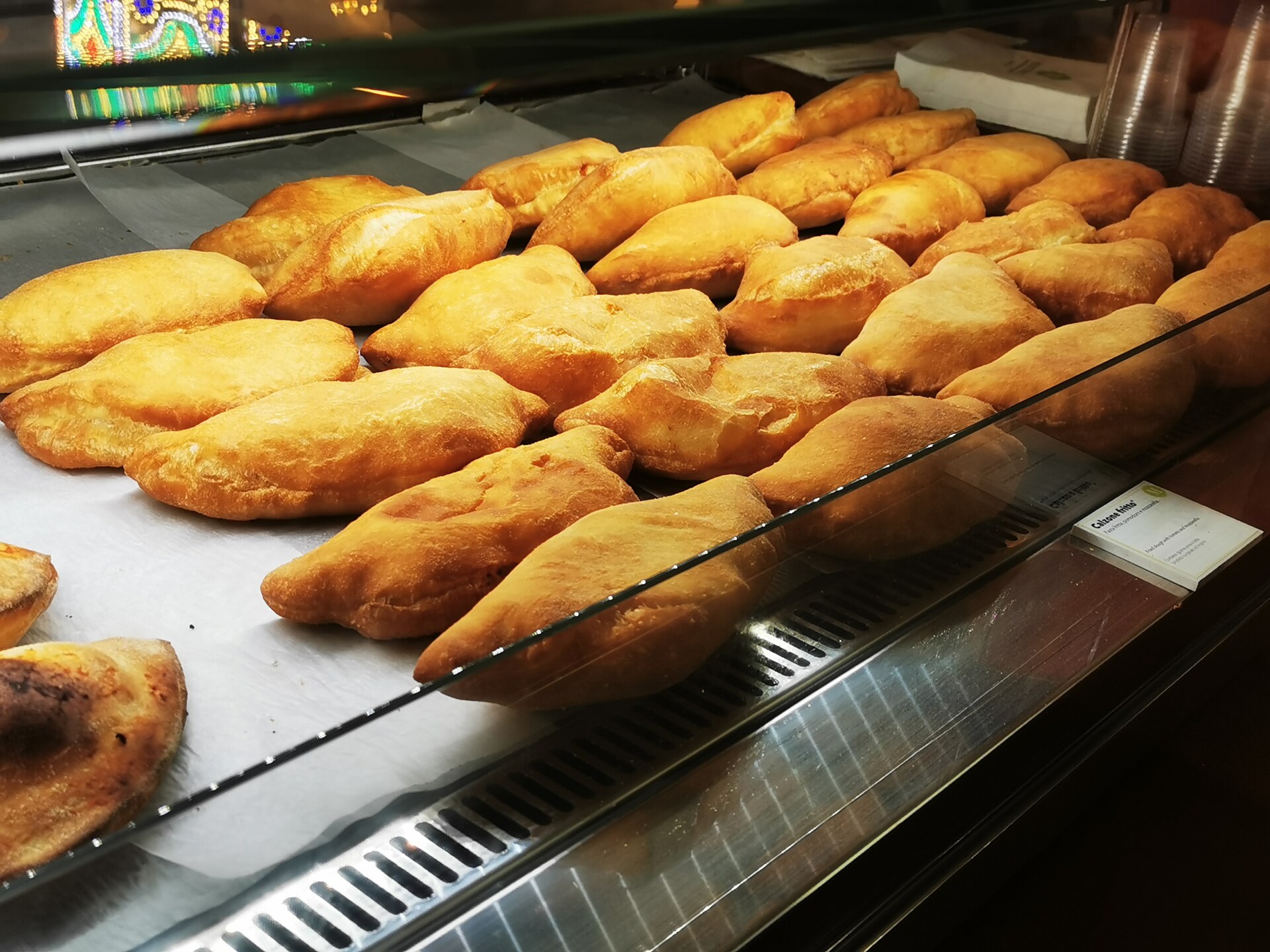
PANE DI GRANO ARSO
In ancient times, after wheat fields were burned for new harvests, resourceful laborers collected the leftover grano arso (burnt wheat). This dark grain, a symbol of both hardship and ingenuity, was used to make bread, becoming a staple food for these workers. Today, pane di grano arso is experiencing a revival. Modern roasting techniques replace burning, resulting in a lighter flour with a unique smoky flavor. This flour stands out not just for its taste, but also for its dark, almost black color. While traditionally seen as “inferior” due to its origins, pane di grano arso is now a sought-after ingredient, adding a depth of flavor–toasted and nutty, with earthy notes reminiscent of coffee.
Where to find the best pane di grano arso:
The earthy scent of whole grains is what hits you first at Spacciagrani in Conversano. Rustic shelves overflow with loaves, but the burnt wheat bread stands out among them. The crust–a deep, almost black color–hints at the smoky aroma that will transport me to cozy winter nights by a crackling fireplace.
Here, there’s another dark-hued bread that you should also try. Pane con farina di riso venere is made from “Venere” rice, a distinctive Italian variety known for its characteristic black color. Its name is derived from Venus, the Roman goddess of love, beauty, and fertility, as it was once believed that this rice variety possessed powerful aphrodisiac qualities. The soft bread is enclosed by a crunchy crust and studded with fresh noci, locally harvested hazelnuts. Needless to say, I’m seduced.
Spacciagrani’s shelves are a veritable feast for the eyes, brimming with Puglian breads, baguettes, Roman-style pizza, supplì, and maritozzi. Owner Francesco Colella honed his skills working as a pizza maker in Nice, France, and later in Germany and England. When he returned to Italy, he trained under two masters, Davide Longoni in Milan and Gabriele Bonci in Rome, before finally returning to his Puglian roots.
“I always had this idea of going back home. It was always there, in the background. I started off wanting to learn as much as possible, but as time passed, it hit me that I had to return home and do something of my own, pulling together the things I’d learned from my experiences,” Francesco explains. “So, I thought, why not do something to help, to provide jobs in Puglia? We’re facing challenges, especially with the younger generation. I had always dreamed of having my own business, a very youthful business to bring in many young people. Doing something for my land, for my territory, for my people–that was my goal.”
Francesco carefully sources all of his ingredients locally, and the team follows a set schedule. Two or three fixed types are crafted each day, supplemented by variations from diverse flour types. As ancient grains come with higher costs, meticulous bread planning and rotation are in place to minimize waste. For instance, on Monday, patrons might encounter pane di gran arso (Francesco’s favorite), followed by rye on Tuesday, yeast-free on Wednesday–thus establishing a dynamic rotation. This approach allows customers to savor a different kind of bread each day and hone their palates to the nuances of different grains and flours.
“My favorite part of this job is kneading–feeling the dough in my hands. [People say] ‘Now you’re an entrepreneur, you have to think about the company.’ It’s true, but an entrepreneur in this case should never lose sight of the quality of the product because it is what always makes you win,” Francesco concludes. “In our limited market, residing in a smaller city, delivering a quality product is crucial. So for me, the joy comes from carefully selecting ingredients and putting my hands in the dough.”
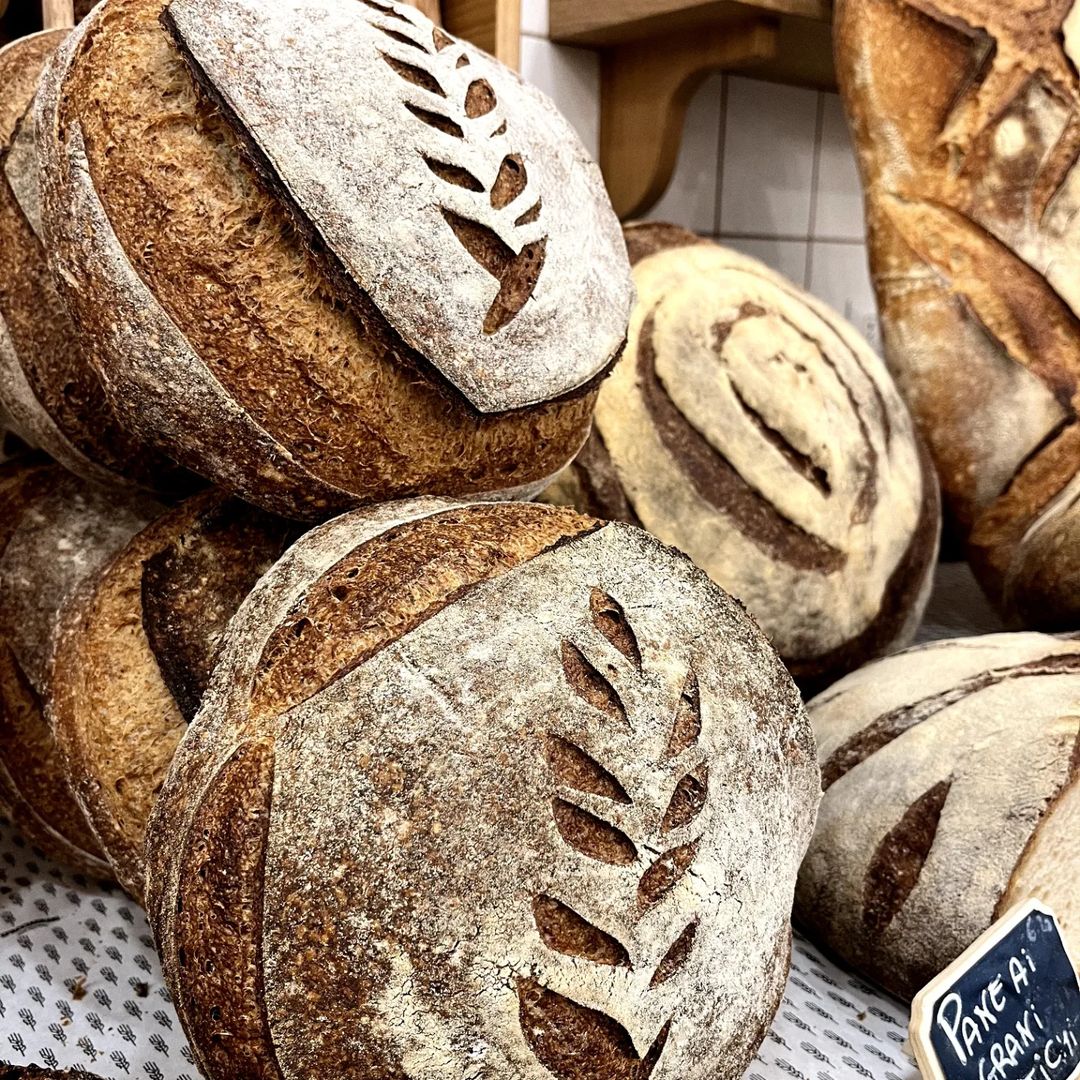
Courtesy of Spacciagrani
PANE DI ALTAMURA
Crafted from durum wheat semolina, Pane di Altamura holds a coveted Protected Designation of Origin (PDO) status, and is the only bread in Italy to do so. Its unique aroma, crispy crust, and soft, chewy interior have made it a local specialty in the town for millennia. Historical accounts even trace it back to the first-century BC poet Horace, who extolled this extraordinary bread as “the best by far”, recommending that wise travelers carry it along on their shoulders for later enjoyment.
Unlike most breads of the era, often made with barley or even acorn flour, Pane di Altamura was a symbol of prosperity, crafted from the finest durum wheat semolina grown in the surrounding Murgia region. Its unique character–a golden crust and a light and airy crumb with an exceptional shelf life–did make the bread a favorite among travelers and even earned it a mention on the portals of Altamura’s cathedral.
Throughout the centuries, the tradition of breadmaking in Altamura remained fiercely guarded, with historical records showing a ban on private ovens in the Middle Ages. This ensured consistency and quality control, solidifying Pane di Altamura’s reputation as a premium product, which achieved the prestigious PDO in 2003. This designation signifies the rigorous adherence to traditional methods and the exclusive use of local, high-quality ingredients.
Where to find the best Pane di Altamura:
Eager to try a slice of history, I make my way to Forno Santa Caterina dal 1391, Altamura’s oldest bakery. (Another local favorite is the renowned Panificio Di Gesù.) The unmistakable sounds of classic Italian songs from the 70s fill the air as I approach the pint-sized shop, where a line snakes out the door. Inside, the breadmaker skillfully uses a peel taller than himself to place and retrieve pans of freshly made focaccia from the ancient wood-fired oven. I opt for a slice of their focaccia with paper-thin slices of potato, crumbled sausage, mozzarella, and a fragrant sprinkling of oregano and rosemary, as well as a large loaf of their Pane di Altamura, round and high with a domed profile reminiscent of a top hat.
Forno Santa Caterina can be traced back to 1391, when it was a communal oven where locals brought their bread to be baked daily. In 1872, the property transitioned from cathedral ownership to private hands.
The grains used here are sourced locally, and the bakers meticulously ensure the integrity of their ingredients by partnering with trusted mills and overseeing the entire lifecycle of the grains, from sowing to harvesting. Sourdough and water drawn from the Puglian aqueduct also contribute to the bread’s distinctive flavor and fame.
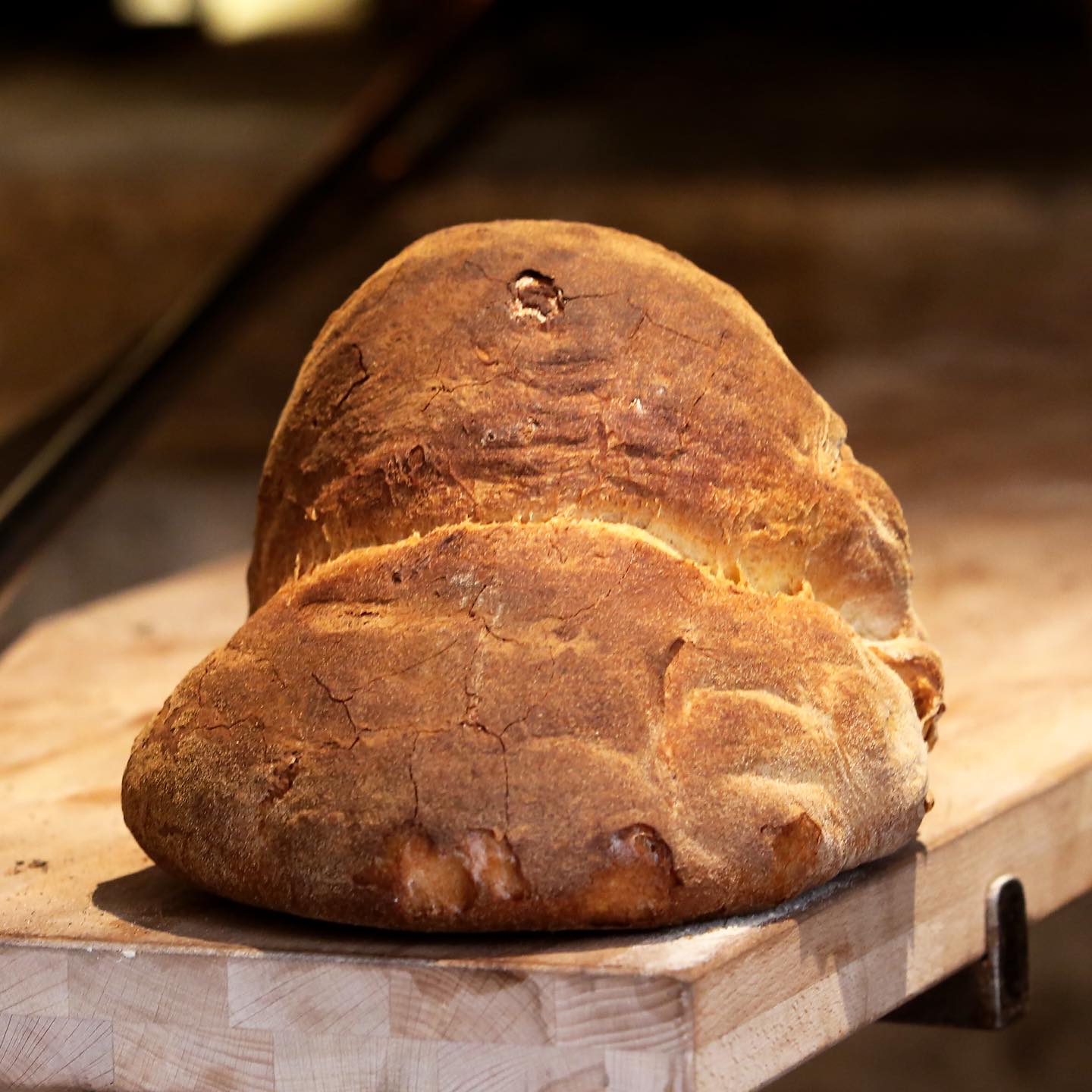
Courtesy of Forno Santa Caterina
TARALLI & FRISELLE
Taralli–addictive, ring-shaped snacks–and friselle–twice-baked bread rounds with a characteristic hole in the center–are the crunchy, cracker-like staples of the Puglian bread canon.
Both taralli and friselle trace their roots back to ancient times and were likely enjoyed by the civilizations of ancient Greece and Rome. The name “taralli” is thought to have Greek origins, stemming from “daratos”, meaning crunchy or crispy, while “friselle” was possibly derived from the Latin “frangere”, meaning “to break into small pieces”, referring either to breaking the friselle in half during preparation or to their crumbly texture.
The two carbs are cut from the same cloth, or dough, and were developed to reduce waste during periods of famine. Taralli repurpose leftover dough scraps–enriched with salt, extra-virgin olive oil, and white wine–and are boiled before baking, while friselle are crafted by cutting bread dough into rounds, baking until firm, and then halving horizontally to form two discs. These disks undergo a second baking until they reach a crispy texture. Before serving, they’re soaked in water to soften–a tradition echoing the ancient practice of dipping them in seawater, as seafaring merchants once did–and topped with juicy tomatoes, olive oil, fresh herbs, and sometimes capers or anchovies. Eat them for merenda or aperitivo, where you’ll also surely find a bowl of taralli–sometimes flavored with fennel, sometimes with peperoncino–anywhere in Puglia.
The crunchy breads really gained prevalence during the Middle Ages as twice-cooking allowed them to last for long periods without spoiling, which was crucial in the region’s balmy climate.
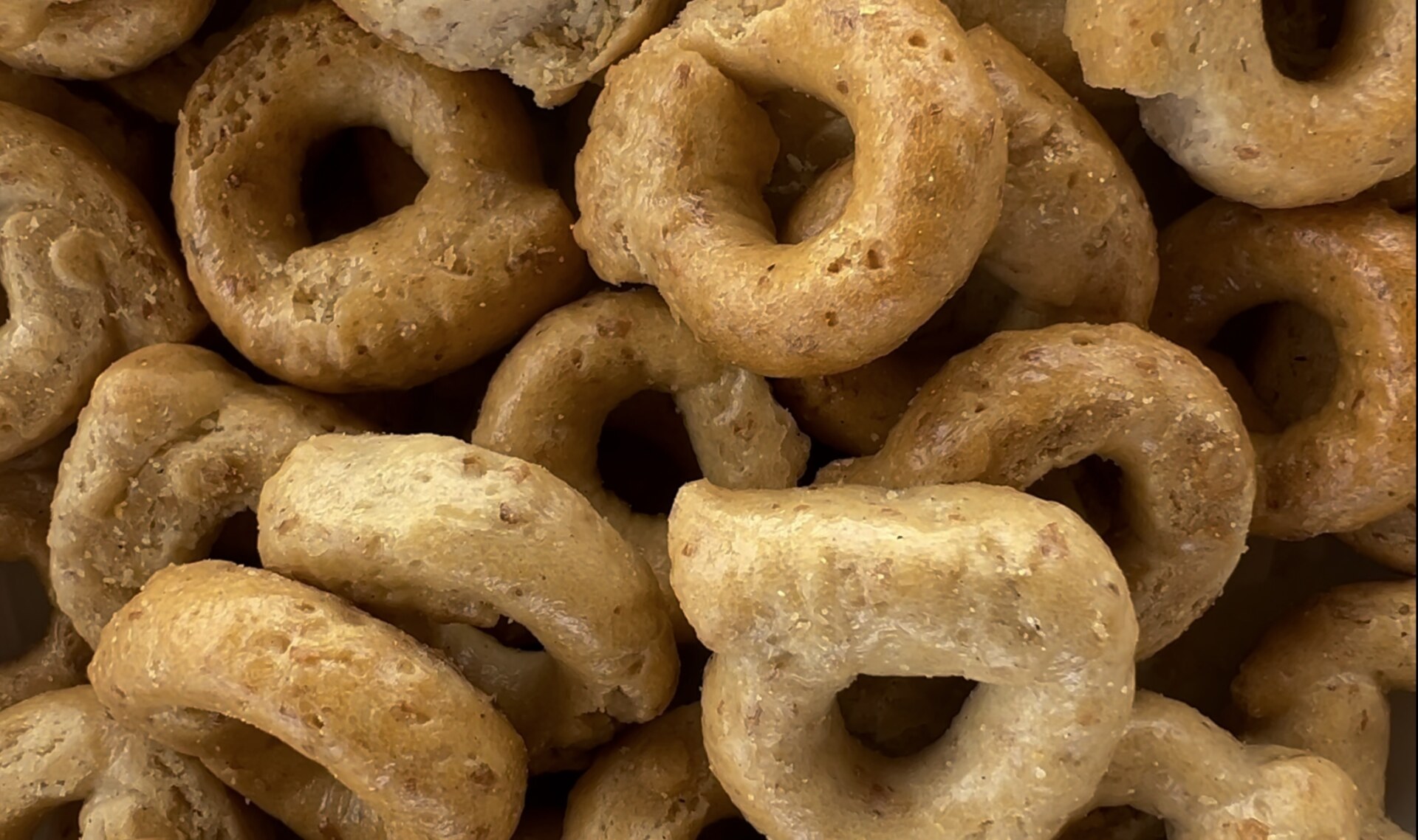
Where to make the best taralli and friselle:
Venture southwest to Manduria and reach Masseria Potenti, a gleamingly white guesthouse that sparkles in the sunlight even when the weather’s chilly. I’m here for a baking class with Maria Grazia Di Lauro, who taught bread making on Italian TV for many years before opening her own masseria.
In one of their sunlit dining rooms, adorned with floor-to-ceiling doors and windows that opened onto a tranquil shaded patio, Maria Grazia offers us coffee and wine–her piercing blue eyes and fuchsia lips sparkling as she shares her culinary philosophy: “The world of the kitchen is the world of love. For me, love passes through food, absolutely.”
At just six-years-old, Maria Grazia learned the art of breadmaking from her grandmother, a proud farmer who instilled in her a deep respect for the land and for food, especially bread, which Maria Grazia says she kneaded with rigor, love, and gratitude. Maria Grazia has clearly followed in her grandmother’s footsteps, for she rises at 5 AM everyday to bake fresh cakes and bread for her family and guests.
The Manduria native pours flour and water onto her board and starts to knead rhythmically. “For me, food should be minimally processed, simple. We should always be able to sense whatever we are eating.”
She begins to mold the dough into ring shapes for taralli and friselle, the latter of which she lightly bathes in water so it acts as a sponge, ready to soak up olive oil, tomatoes, and fresh herbs.
Next, she starts on a stuffed focaccia. Her version diverges from the typical Barese kind: instead of tomatoes and olives, she adds cime di rapa from her garden, scamorza cheese, agrodolce onions made in-house, and a generous drizzle of pungent olive oil sourced from the property. Another thin layer of dough is added on top and sprinkled with sesame seeds before baking. We eat it hot from the oven, paired with a glass of Masseria Potenti’s juicy Primitivo wine.
But the lesson reaches its crescendo with a breadbasket, itself sculpted entirely from dough, and brim full of rose-shaped rolls. You might say it’s a powerful metaphor for Puglia itself–and pretty meta to boot.
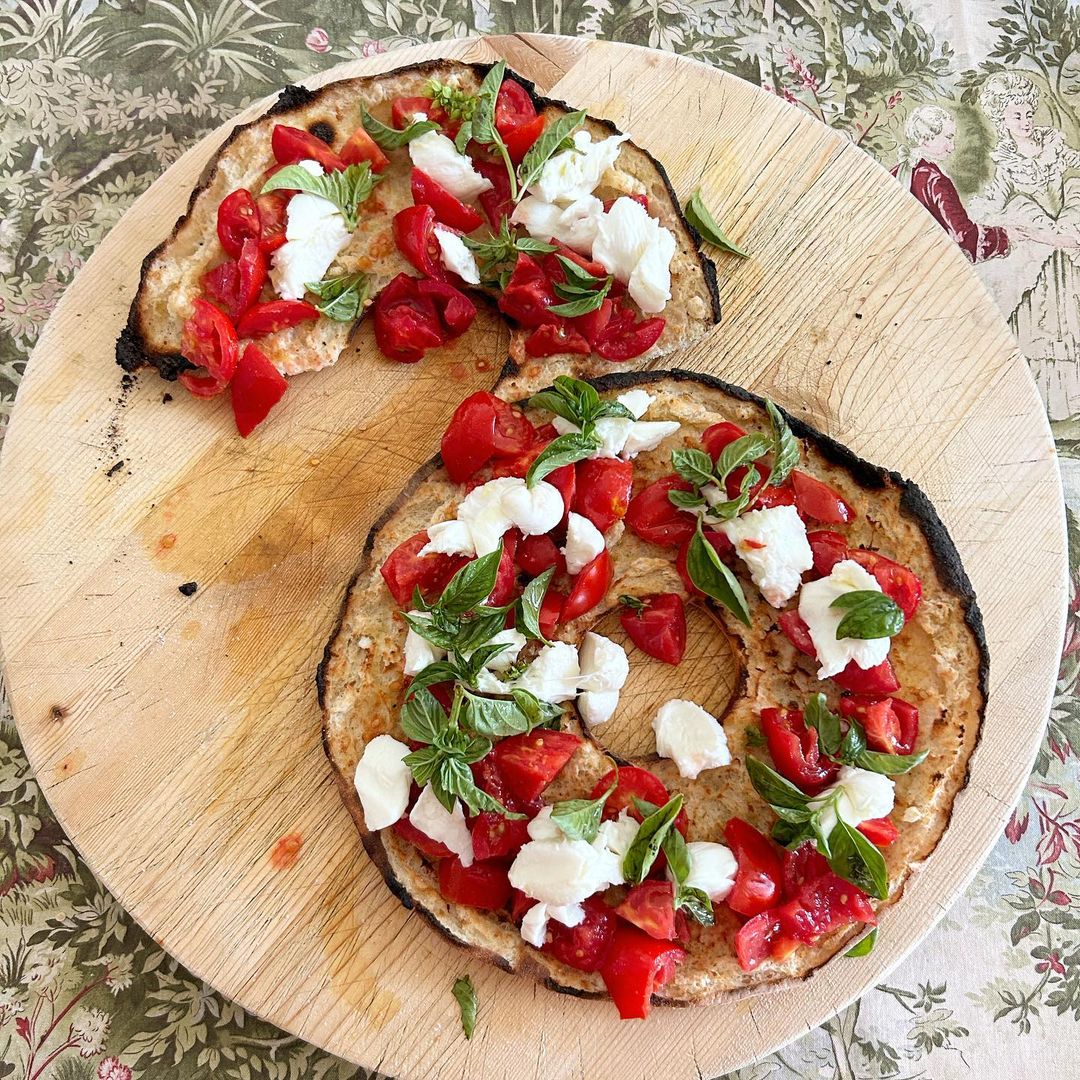
Courtesy of Masseria Potenti











